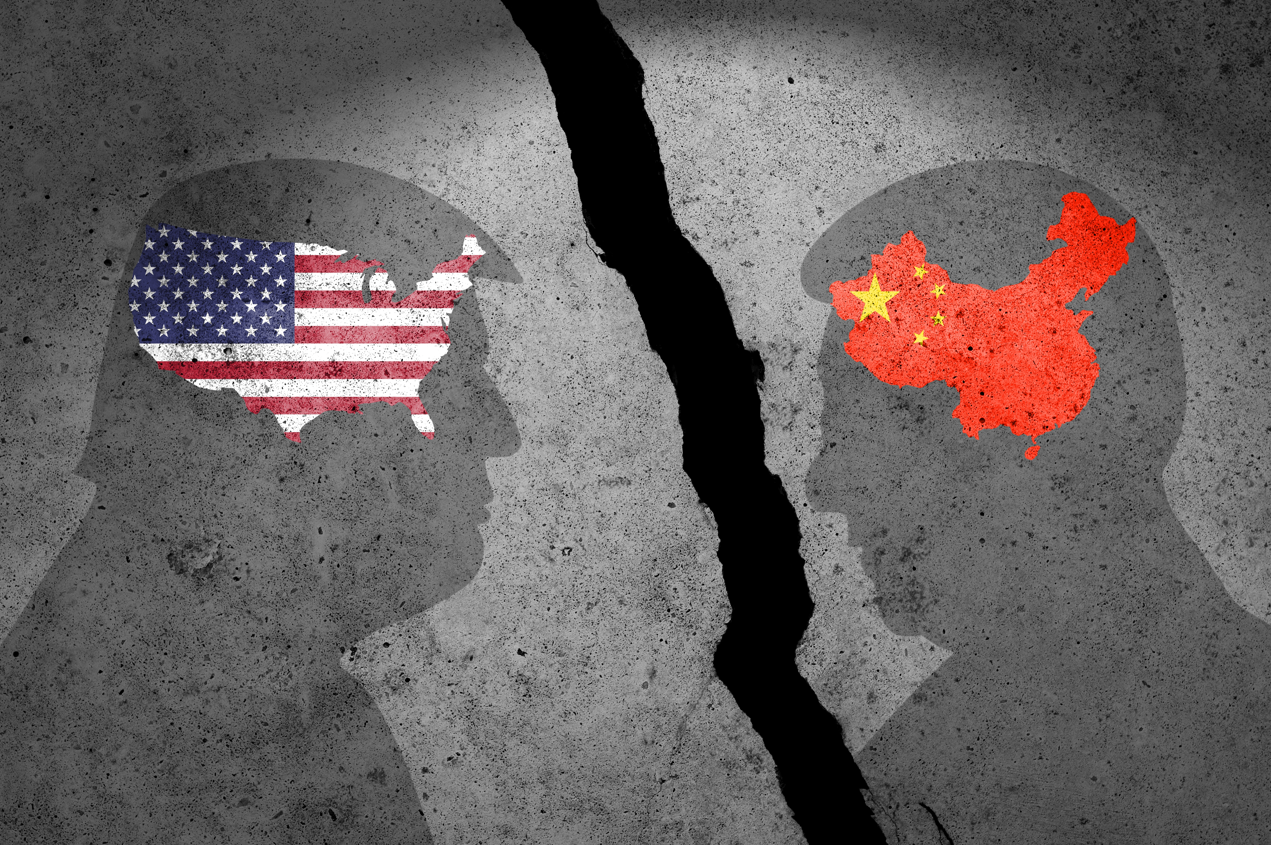A trade deal between China and the United States is nowhere in sight. The mountain of issues could take a long time and enormous effort to resolve. It’s certainly not going to happen in three or four weeks, as Trump has suggested. More likely, it will be months, if not years.

With China and the United States deadlocked in a trade war initiated by U.S. President Donald Trump, two important questions are being raised: When can the two countries be expected to enter into negotiations? And how quickly can a deal be struck?
So far this year, Trump has imposed tariffs totaling 145 percent on goods from China. The levies are hurting. The country’s manufacturing activity is shrinking as orders of goods bound for America are canceled and factory workers are laid off.
However, Beijing says it will not bend under economic pressure. China is determined to avoid the fate that Japan suffered in the wake of the Plaza Accord and to maintain its rightful place in the world. For years, it had been prepping for such an eventuality. When the fortunes of the nation are at stake, China stands ready to resist, vowing to be there for the long haul and “fight to the very end.”
The country is stronger and more united than it was during Trump’s first term. Increasingly, the Chinese people see the trade war as part of inevitable growing pains and are convinced that the country will emerge more resilient than ever. Although the effects of the tariffs on China’s economy will become sharper, Beijing believes that it can endure the trade war longer than the United States can, and it remains confident that the nation will be able to achieve its projected economic growth of around 5 percent in 2025.
In the U.S., Trump’s tariffs are beginning to bite as well. Consumers and businesses are feeling the pinch of inflation. Meanwhile, China’s export controls on critical minerals are hitting a slew of sectors, including the U.S. defense sector. Tesla, for example, could miss its production plan of 1,000 humanoid robots in 2025 if it fails to secure rare minerals from China. But the worst is yet to come for the United States. Like cancerous cells, the pain will spread gradually.
The U.S. remains highly dependent on China for a large number of commodities. In 2023, China accounted for the majority of smartphones (76 percent), natural graphite (70.3 percent) and portable computers (78 percent). It was also the source of 75 percent of the dolls, tricycles and scooters in 2024.
Trump sees China’s trade surplus with the U.S. as America having the upper hand. Stephen Miran, chair of Trump’s Council of Economic Advisers, even claimed: “We can make stuff at home. We can buy from other countries.” That may be the case in the long run, but for the short term the key is how quickly the U.S. is able to replace Chinese products at comparable prices. As things stand now, a host of products — high-end products in particular — cannot be easily substituted. China is, and will be for a considerable period of time, the only real game in town. So its trade surplus with the U.S. is an actually an advantage, not as Trump believes. As Martin Wolf of the Financial Times pointed out, it is easier for China to cope with its lost demand than for the U.S. to deal with its missing supply.

A Year Without "Made in China," by Sara Bongiorni
In 2005, Sara Bongiorni, an American journalist, conducted a yearlong experiment on how her family would fare without Chinese products. Trump is now conducting a similar experiment on all Americans. Very soon he will discover what Bongiorni concluded two decades ago: Finding alternatives for Chinese goods is not just hard but also expensive. And it is sometimes practically impossible. Washington has long been making noise about the risks of relying on China economically, and yet in its rush to tame China it apparently forgot its vulnerability.
With Chinese products largely kept out of the U.S. market by Trump’s steep tariffs, Americans are likely to experience COVID-19-style shortages with a host of products. When inventories are used up, as the CEOs of major U.S. retailers reportedly warned Trump, store shelves will be left empty. Even if alternative sources for some Chinese products are readily available, the costs of the imports will be substantially higher given Trump’s baseline tariff of 10 percent on all imports, up from 2.3 percent in 2024. As a result, while the purses of consumers are hit by inflation, businesses will be forced to cut back their operations or even close outright.
The current trade war is not just one between China and the United States; it pits America against the rest of the world. Trump’s punitive duties amount, in essence, to extortion of other countries. As such, they have caused considerable resentment and indignation globally, alienating U.S. allies and adversaries alike. The longer Trump’s new tariffs stay in place, the more damage they will inflict on U.S. ties with the rest of the world.
Time seems to be on China’s side. While Trump expected that China would be anxious to make a deal in the face of his crushing levies, he actually found it impossible to goad China to the negotiating table. China seems to be in no rush to negotiate an end to the tariff deadlock.
Apart from safeguarding its own rights, China’s retaliatory measures were designed to defend the multilateral trading system and international fairness and justice. Trump’s so-called reciprocal tariffs blatantly violate the most-favored nations principle of the World Trade Organization — the cornerstone of the rules-based international order. They also upend the way in which global trading rules are established, replacing the system of consensus-based decision-making with Trump’s personal wishes and whims.
In fighting Trump’s “liberation day” tariffs with its own levies on the U.S., China has borne the brunt of Trump’s wrath. But saying no to his bullying may have played a critical role in prompting him to pause his promised higher tariffs. An act of justice that won wide support in much of the world, according to Brazilian President Luiz Inacio Lula da Silva, China’s pushback provided a huge moral boost for countries struggling to respond to Trump’s overwhelming tariff threat. It encourages them to push back as well on Trump’s demanding terms. As it considers its responsibility and obligation to stand up to Washington’s hegemonic trade policies, China can be expected to hold off on trade talks with Washington even as the Trump administration attempts to coerce other countries into accepting his exorbitant demands.
Another sticking point in the standoff centers on which side should make the first move to de-escalate the crisis. The White House was adamant that the ball is in China’s court. While keeping the door open to trade talks, Beijing has insisted that he who tied the knot should be the first to untie it. Trump initiated the trade war by imposing a 10 percent tariff on China for allegedly not doing enough to help Washington with fentanyl. The drug crisis is, in Beijing’s view, America’s own problem, and Washington should have been grateful to China for helping at all. Would any rational and reasonable person expect the victim of an assault to reach out to the attacker?
Even after trade talks finally get off the ground, tensions likely linger for a long time. While Trump is supposedly willing to substantially reduce his tariffs, he has insisted that the rate “wouldn't be zero.” It would be fair, however, for both countries to roll back all levies on each other’s goods.
China considers Trump’s removal of punitive duties as a matter of principle that cannot be compromised. A hijacker that cuts his ransom from $10 million to $1 million should not expect to be acquitted just because he slashed his original demand. Similarly, a tariff reduction will not absolve the Trump administration of violating global trading rules. In fact, nothing short of scrapping all tariffs can do that. Chinese acquiescence to any U.S. tariffs, however small, would make it an accomplice in Trump’s dismantling of the global trading system. That is why China demands that the U.S. completely abolish all unilateral tariffs on China.
Trump has also insisted that he will need something “substantial” from China if his tariffs are to be scrapped. Clearly, he intends to use tariffs as leverage to extract concessions from Beijing. Egregious as it is, the demand should surprise no one in light of Trump’s “America first” tenet. He said, “If we can make a really fair deal and a good deal for the United States, not a good deal for the others, this is ‘America first.’” Given that Trump is what he is, he will not reverse course on his tariff policy until its negative effects — such as low polling and economic setbacks — catch up with him.
All these issues and many others could take a considerable amount of time and effort to resolve. Thus, a trade deal between China and the U.S. is really nowhere in sight. It will definitely not be ready in three or four weeks, as Trump has suggested. Rather, it will surely be months, if not years.
